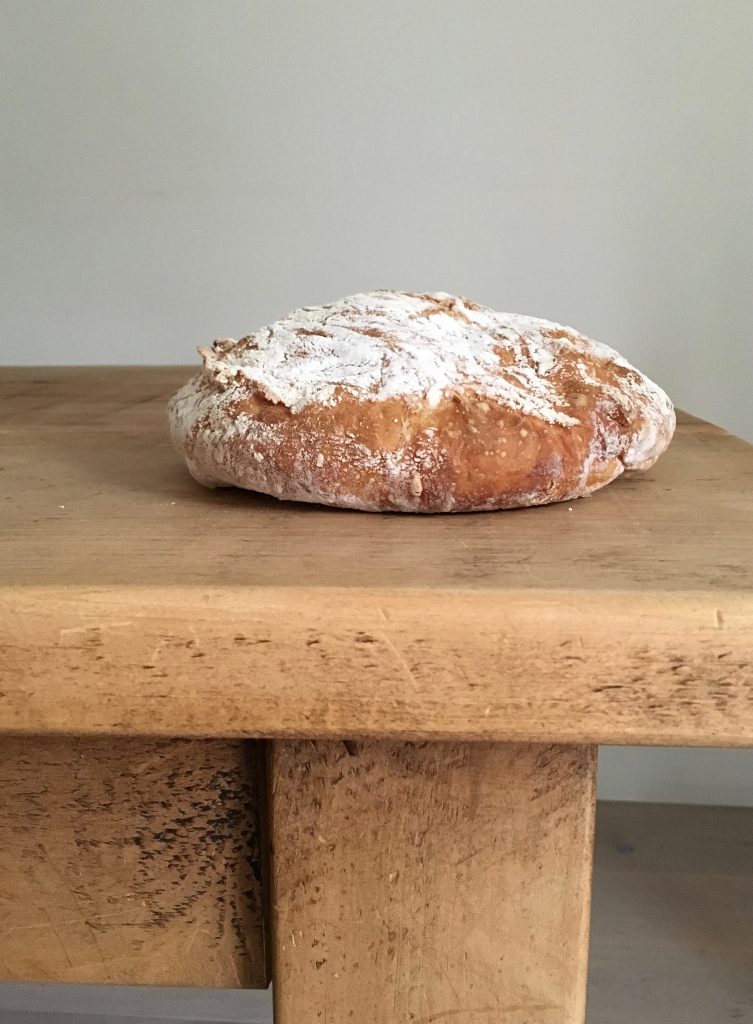
Flour. Yeast. Water. Salt. These are the ingredients that real bread is made from. A drizzle of olive oil if you’re making pizza, perhaps, a handful of oats or wheatgerm for flavour, nuts and seeds or dried fruit for texture. Real bread goes from oven to table in minutes. It starts life on the kitchen counter, serves several meals then is either eaten or repurposed to thicken soup, as crumbs to coat fish, or crusts saved in the freezer. Real bread doesn’t sit on a shelf for a week, stuffed with synthetic fats, stabilisers and mould inhibitors to allow it to do so. It doesn’t live as long again in your kitchen, sliced and stodgy and sweating slightly in its plastic wrapper . 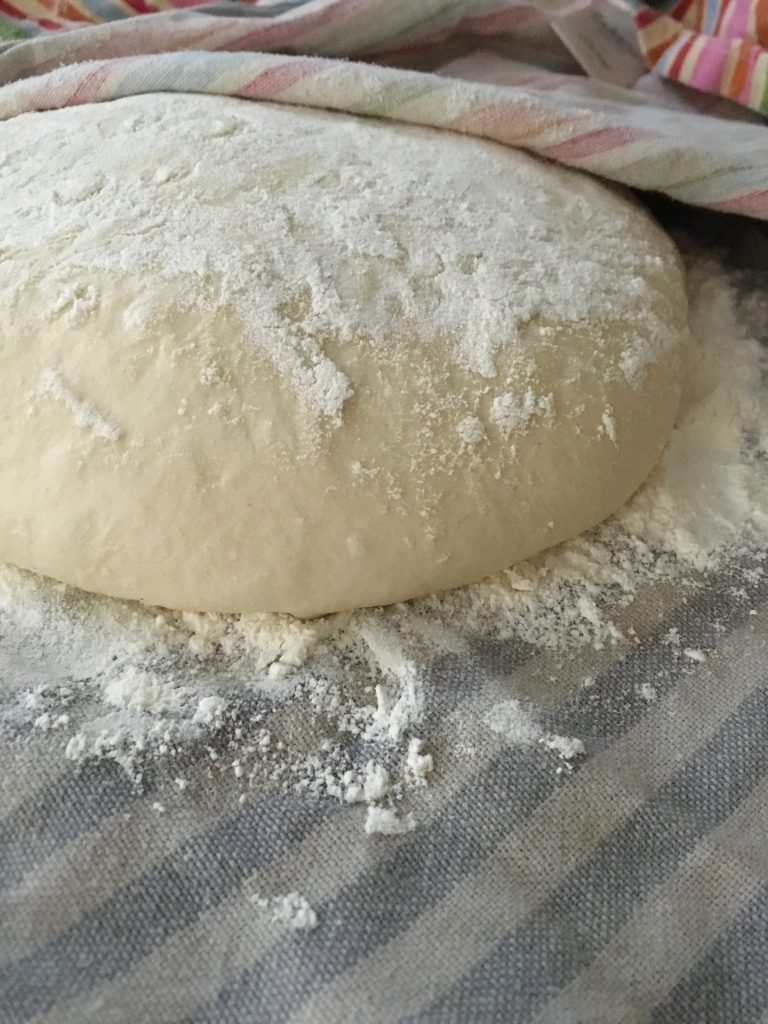
Real bread is something I’m pretty passionate about – it’s the reason I started this blog in the first place – so when Le Pain Quotidien invited me to take part in their latest campaign, I had to sign up. Le Pain might not be the first to champion the important cause of real bread, and I certainly hope they won’t be the last, but this stuff is so important it bears repeating. In an age where we’re utterly obsessed with what goes into our bodies, bread has gone from everyday staple to the subject of extreme controversy. On the one hand we have double digit priced artisan sourdough, people queuing out the doors to grab a slice they can smear with insta-worthy avocado,; on the other the pappy sliced stuff piled high in supermarkets, little to differentiate between the packets other than a good marketing campaign and some added nutrients to replace the ones the manufacturing process has stripped away. People avoid bread baskets like the plague, complain of bloating and equate gluten-free diets with health, but what is the truth about bread?
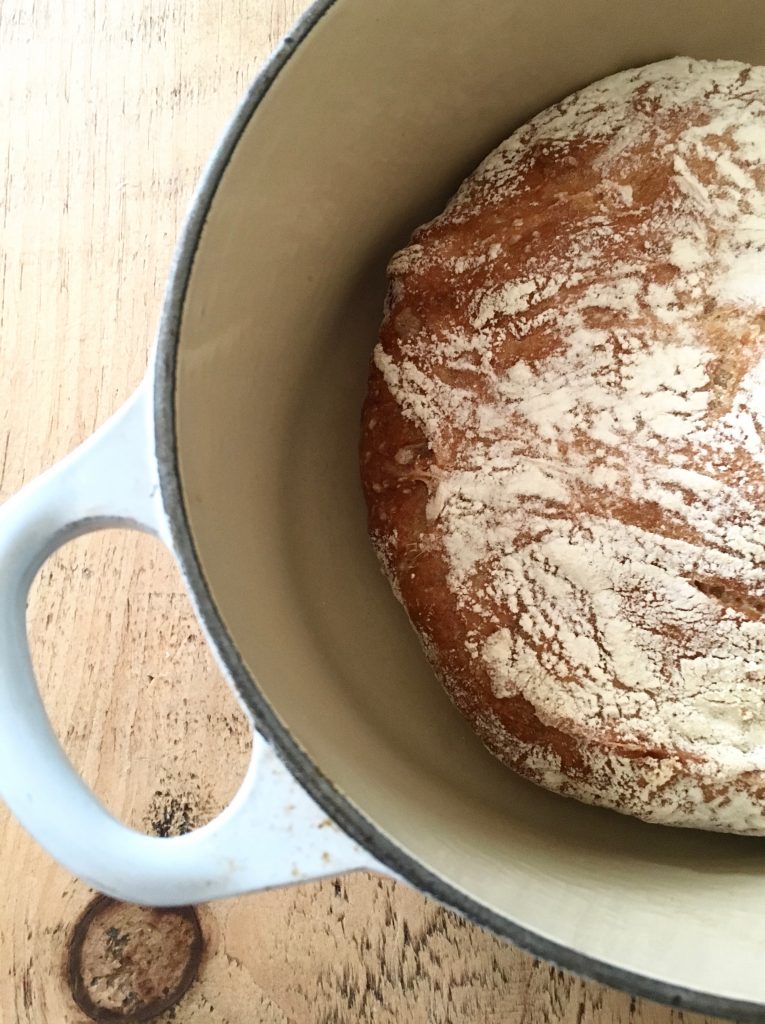
As with so many questions in life, the answer isn’t revolutionary. Unless you’re gluten intolerant (and I mean properly intolerant, not just that you feel borderline comatose after eating an entire 20 inch pizza to yourself, as even the best of us might), eating a little bread isn’t going to do you any harm. In fact, a new study in the British Journal of Nutrition found no differences in stomach emptying time, gut symptoms, bowel water content or gas when healthy adults ate gluten-free bread versus regular bread. What could make a difference, however, is eating real bread made with just flour, yeast, water and salt. Not necessarily the insanely priced artisan stuff, but bread made at home in the good, old-fashioned way. In contrast to commercially made bread, pumped full of air and artificial ingredients, it’s a great source of carbs, our bodies’ preferred source of fuel, is fun to make and tastes damn delicious to boot.
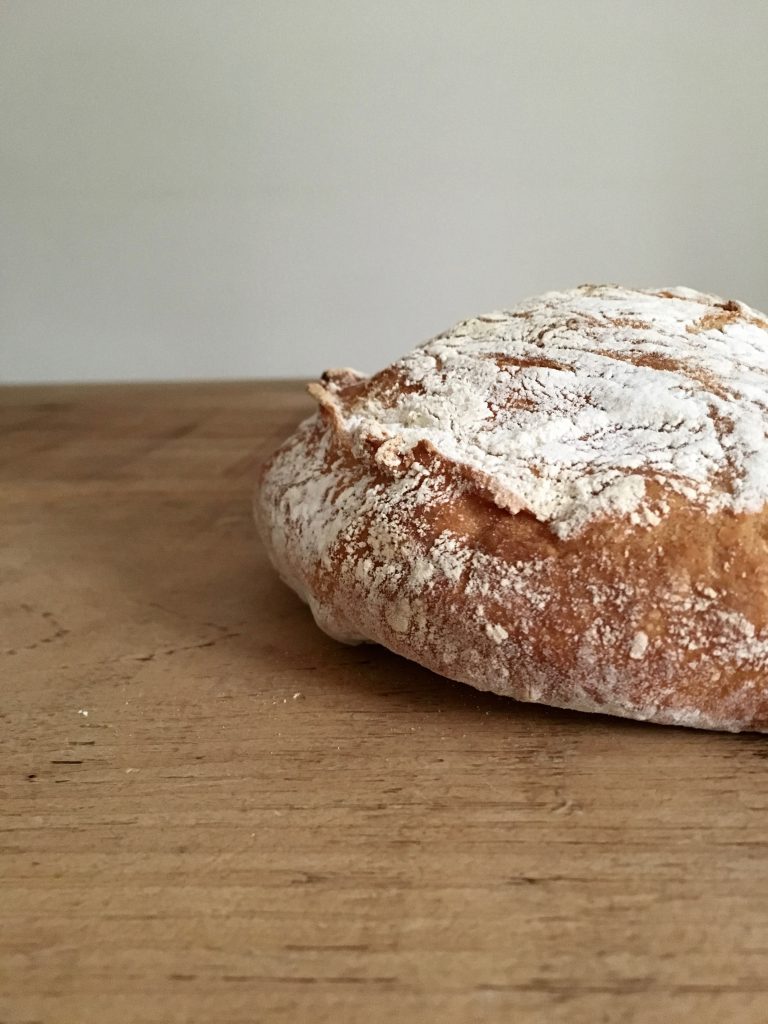
The recipe I’m posting today is a no-knead loaf of bread. Just four ingredients and absolutely no shaping or kneading skills and you can achieve this beautiful loaf: slightly sour and chewy in the middle with a crisp crust and the kind of air pockets you’d see in your local fancy bakery for five times the price. The secret to this recipe is time, and although you might groan at the fact this takes over a day to bake, I promise your hands on involvement will be less than half an hour. Mix the ingredients as you’re making dinner, pop it in the oven the following night and you’ll have a beautiful fresh loaf on the table for the following morning. Four ingredients. A little patience. A very lovely loaf.
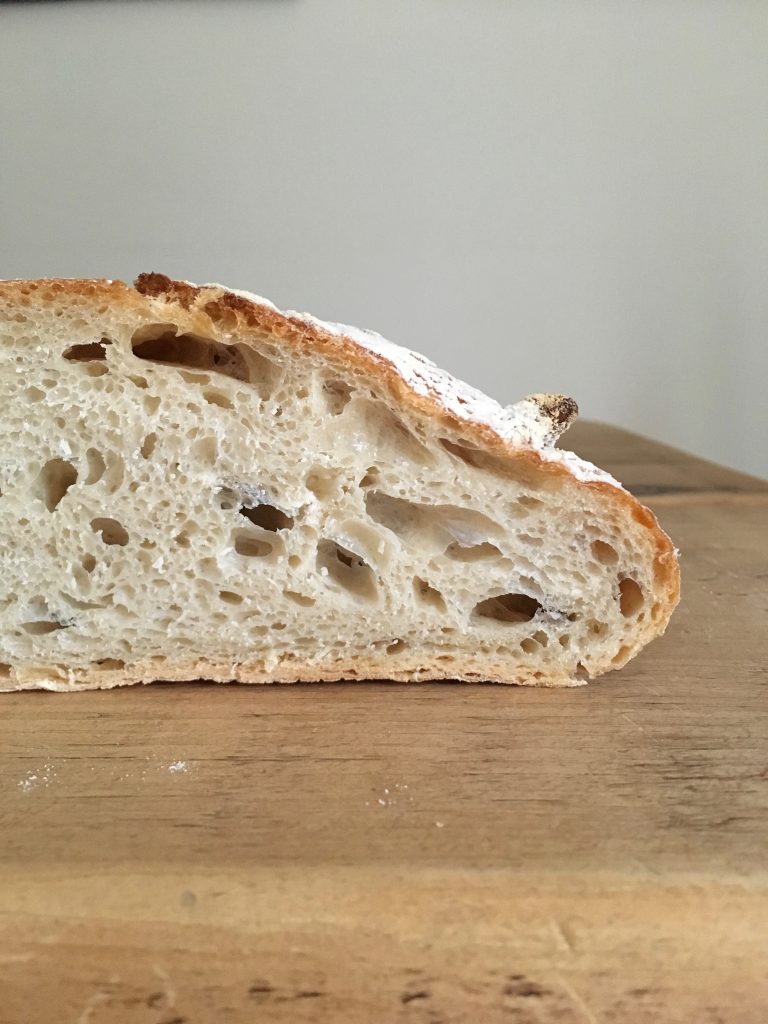
- 400g strong white bread flour, plus extra for coating
- ¼ tsp instant yeast
- 1¼ tsp salt
- 320ml water
- In a large bowl, stir together the flour, yeast, and salt. Add the water and mix with a wooden spoon until you have a wet, sticky dough (have faith, it should be really sticky)
- Cover the bowl with acting film and set aside to rest at warm room temperature for 18 - 24 hours. You’ll know the dough is properly fermented and ready because its surface will be dotted with bubbles and take on a darkened appearance.
- When ready, generously flour your work surface. Use a spatula to turn the dough onto the surface in one blob - it will be pretty loose and sticky, but don’t add more flour. Instead use lightly floured hands to gently and quickly lift the edges of the dough in toward the center, effectively folding the dough over onto itself. Nudge and tuck in the edges of the dough to make it round.
- Generously coat a tea towel with flour. Place the dough, seam side down, on the towel and dust the surface with a little more flour. Cover with another tea towel and let the dough rise for 2 more hours. When it’s ready, the dough will be more than double in size and will hold the impression of your fingertip when you poke it lightly, making an indentation.
- Half an hour before the dough is done with its second rise, preheat the oven to maximum (or 220 degrees C). Adjust the oven rack to the lower third position and place a large crock pot and its lid in the oven as it heats.
- When the dough is done with its second rise, carefully remove the pot from the oven and uncover it. Also uncover the dough. Lift up the dough and quickly but gently turn it over into the pot, seam side up, being very careful not to touch the pot. It may look a bit of a mess but have faith, everything as it should be. Cover the pot with its lid and bake for 30 minutes.
- Remove the lid and bake until the loaf is beautifully browned to a deep chestnut color, 15 to 30 minutes more. Use a heatproof spatula to carefully lift the bread out of the pot and place it on a wire rack. Don’t slice or tear into it until it has cooled, which usually takes at least an hour.
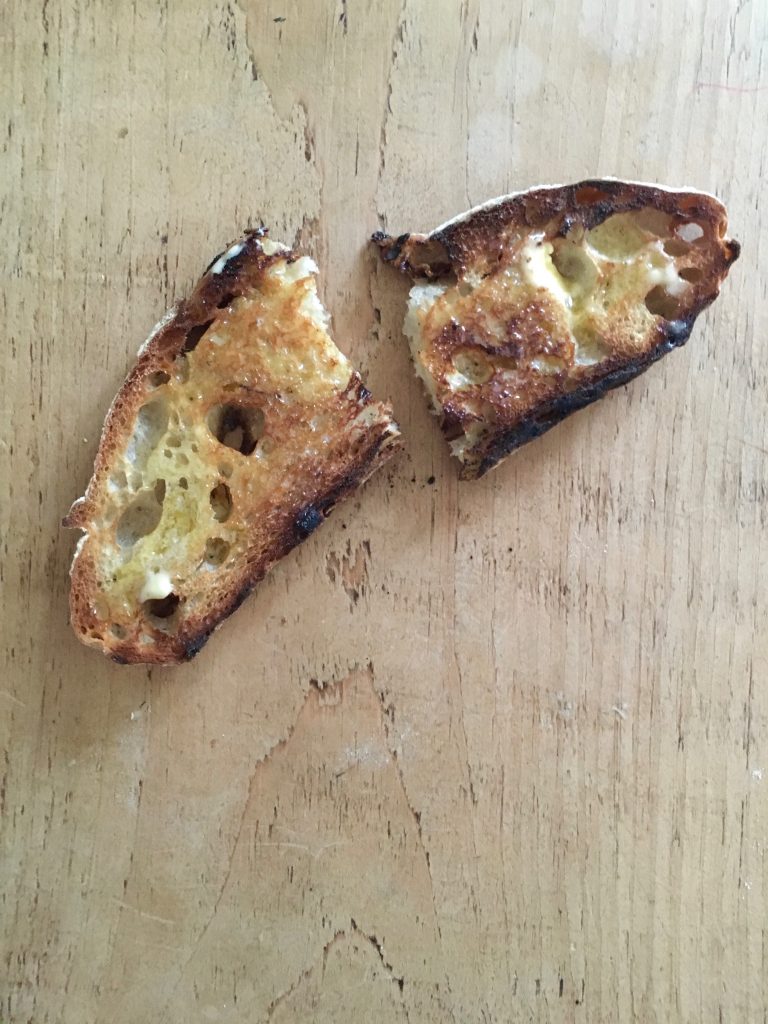






Hooray for homemade bread! I went on a lovely bread-making course in April and haven’t bought a single supermarket loaf since – it’s so easy to make a loaf and satisfying too in many senses. And this Jim Lahey recipe is one I’ve been planning to try for ages (I went on a pilgrimage to the Sullivan Street Bakery in NYC when I was there!) so thank you for chivvying my ambition along. xx
I love, love, love homemade bread. I’ve seen this recipe a few times and am intrigued – I’ve always made no-knead bread but never used the oven pot so I’m not sure it’s worth the risk of me burning myself!
NINEGRANDSTUDENT: A Foodie Blog
Can use something else instead of a crock pot? The bread sounds and looks amazing, I would love to make it.
It can be cast iron, pyrex, enamel or ceramic, as long as it has a tight fitting lid!
Can I use fresh yeast in this recipe? If so, how much? I’ve been baking my own bread for a while and always use fresh yeast and would love to try this no knead recipe.
The photograph of the toast sealed the deal for me- I’m making this next weekend!
I have made this and it turned out so well, several of my fb friends have followed suit and are as impressed as I am. I am sharing the link to this page.